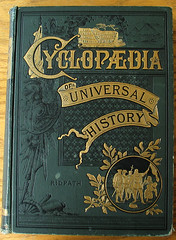That’s right, I’m hosting a contest—and soon. Why not now? Because this is the kind of contest you have to get ready for.
I want to share our best writing lessons, no matter where that lesson came from. It could be an insight you received from revising your own work, advice from a critique partner, an enlightening conference/presentation/class, a great writing book—anything. It could be an outlook, a technique, a strategy, or (again) anything.
I’m still hammering out the details for the contest, so I’m open to suggestions, and the information below is subject to change. (This post will always be updated with the latest information on the contest.)
What do you have to do to enter?
Submit a guest blog post, 300-1000 words in length, on the best writing lesson you’ve learned. Tell us how you discovered (or accepted!) your lesson, how you changed your writing because of that lesson, and most of all, how we can apply the same lesson to our writing.
Feel free to include links and a short biography, as well as pictures (this will work best if you upload them to Flickr first—as always, be cognizant of copyrights!). More than 2-3 links to your own blog within the post is a bit much, don’t you think?
To be eligible, entries must be received by 1 June 2010 in my mailbox at contest AT jordanmccollum.com . That’s two weeks to look over your writing life and come up with a couple pages. Not hard, right?
The winner
Here’s how it’ll work: All blog posts that meet the guidelines will be posted, one per day, in the order I receive them. Each post will have two weeks to receive comments. The finalists will be the posts with the most comments (excluding comments by the author of the post). The number of finalists will depend on the number of entries.
The top commented articles will then go to a panel of judges (who, um, have yet to be determined).
The prizes!
Um…. I’m not totally sure what the prizes will be. I’m thinking a writing book would be most appropriate. I’d like to be able to give the finalists as well as the grand prize winner. So this is one area I’ll be taking suggestions on!
How to win
Write an engaging, thoughtful post. Try to encourage discussion with a prompt or question at the end of your post. (Please, do not bribe people to comment with giveaways!)
Promote your post. Email your writing friends about it. Tweet about it. Share it on Facebook. Take the URL with you to critique group.
Participate in the discussion. Although your comments won’t count toward your total, it won’t hurt you to interact with the people who do comment. In fact, it’s a great way to fuel a discussion. (But as always, be civil.)
Suggestions?
I’m still open to suggestions for fine-tuning this contest. Should I not reveal who the authors of each entry are until after their two weeks are up? What would be a good finalist/grand prize? Who should I have judge?
Photo by terren in Virginia




 5) Giving the protagonist miserable backstory. This is often done in order to excuse some unsympathetic behavior or attitude [and is also a common technique to try to make villains sympathetic]. Yeah, he hates women, but it’s because his mother abandoned him! And his foster mother beat him! And his aunt framed him for murder! And his first girlfriend trapped him into marriage by getting pregnant! And…
5) Giving the protagonist miserable backstory. This is often done in order to excuse some unsympathetic behavior or attitude [and is also a common technique to try to make villains sympathetic]. Yeah, he hates women, but it’s because his mother abandoned him! And his foster mother beat him! And his aunt framed him for murder! And his first girlfriend trapped him into marriage by getting pregnant! And…


